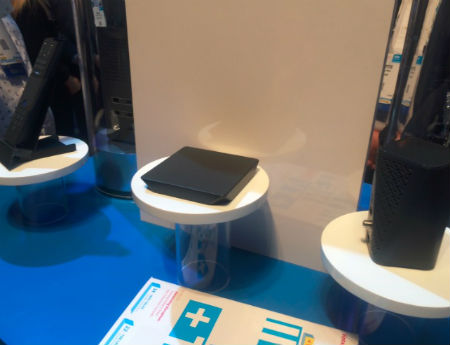INTX 2016: Comcast Sets July 4 Debut for First HDR-Capable Box

Boston – Comcast plans to start shipping its first box with on-board High Dynamic Range (HDR) capabilities on July 4, according to Tony Werner, Comcast’s EVP and chief technology officer, said here Wednesday during a session with other industry CTOs.
That will ensure that the Xi5 will be available in time for the Rio Olympics, where NBCUniversal will be producing some coverage in the HDR format. Comcast also offer a taste of HDR during the games at some special screenings that will showcase the format.
Werner said he has more personal interest in HDR, a technology that enables brighter and more colorful pixels, than 4K, a format that packs about four times the number of pixels than today’s HDTV images.
He said upconverted 1080p looks good, but HDR makes it “noticeably better.”
Here at the show, Comcast showed off the Xi5, its first HDR-capable box that will be wireless and work with the company’s IP-capable X1 platform. Comcast is also developing the Xi6, which will support both HDR and 4K.
Comcast plans to demo HDR in some hosted events it will arrange during the summer games in Rio.
As for 4K, Werner said Comcast won’t “roadblock” access to it, but said there’s need for more content in that format .
The smarter way to stay on top of the multichannel video marketplace. Sign up below.
The wide-ranging discussion also touched on Comcast’s X1 platform, which is being licensed by Cox Communications and Shaw Communications and uses the Reference Design Kit (RDK), a preintegrated software platform for video and broadband devices being managed by Comcast, Liberty Global and Time Warner Cable (now part of Charter Communications).
Licensing X1 for Cox’s new “Contour” product, “was a key part of our strategy to gain scale, scale around innovation,” Kevin Hart, Cox’s EVP and CTO, said, stressing that there’s a need for more collaboration in the industry.
“The early success is off the charts,” Hart said of Cox’s new X1-based Contour product, which has been deployed to most of the MSO's markets. He added that Cox is looking to update its capital models next year in order to keep up with demand this year and into 2017.
“Once we got this locked and loaded, these guy went,” Werner said.
The panel also discussed the evolving world of advertising and the shift to more targeted and interactive ads.
Comcast, Werner said, expanded on Comcast’s strategy to integrate interactive ads with the X1 guide environment.
Though advertisers weren’t interested in the early phases of X1 when few customers were on the service, that’s no longer true as Comcast aims to get 50% of its video base on it by the end of the year. “They are doing the limbo under our door to get ad spots on there,” Werner said, noting earlier that he has “warmed up” to the idea of offering interactive ads on the X1 guide.
Comcast has supported interactive ads on legacy boxes using EBIF (Enhanced TV Binary Interchange Format) (EBIF), but plans to bring it back in a “big way” to X1 using more advanced technology.
Roku, meanwhile, is also pushing hard into this arena, and recently struck a deal with Viacom to help the programmer make its ads more relevant, said Steve Shannon, GM of content and services at Roku.
Darcy Antonellis, CEO of Vubiquity, noted that targeted advertising technologies continue to improve, but are still in the “nascent stages” when it comes to refinement, noting that her getting an for Deadpool is a “tell-tale sign” of that because she’s not in the demographic for that particular movie.
The talk also touched on the potential for virtual reality and 360 video.
Discovery Communications, which launched a VR unit last year, is “still searching for that consistent user experience,” company CTO John Honeycutt said.
And though mobile video is grabbing lots of attention and headlines, there’s a “revenge of the TV” occurring as more of those big screens get connected to the Internet, Roku’s Shannon said. “It is roaring back to be the predominant streaming platform.”
Werner said Comcast is finding tablets and other second screens to be accretive, and not a displacement of TV viewing. “They can fill gaps with it,” he said, noting that Comcast, for example, has seen many viewers pause a show on the set-top at 10:15 p.m. and then soon resume it on a tablet.
